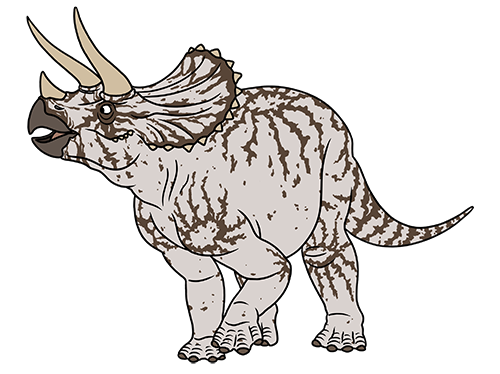Triceratops
#10
by Kyle Morris on October 18, 2021Easily one of the most-famous and recognizable dinosaurs, second only to T.rex, this animal has captured the hearts of children and adults alike for over a century. Its name means “three-horned face” from the three horns adorning its massive skull, one on its nose and one above each eye. It was given its name in 1889 by Othniel Charles Marsh.
The first fossil material discovered of this animal was incorrectly classified as a giant extinct bison. In 1888 a mostly complete skull was discovered by John Bell Hatcher, and it was properly classified as a dinosaur. These horned dinosaurs have been found throughout the western United States and western Canada.

Artist Rendering of Triceratops
Triceratops was a very large ceratopsian dinosaur, comparable in size to a large African elephant. Large adults could stand up to 10 feet tall, weigh over six tons, and reach lengths of over 30 feet. Some individuals had skulls that were over eight feet long.
Fossil evidence of puncture marks on Triceratops frills matching the horns of the same animal suggests that these animals fought each other, potentially for dominance and mating rights. Other evidence shows tooth marks belonging to Tyrannosaurus rex, which likely fought with and preyed upon the smaller herbivore.
Recently, one of the largest and most complete Triceratops skeletons, named Big John, was announced to be going up for auction in October 2021, estimated to be sold at up to $1.77 million.
Did you know that the Triceratops is also one of only four dinosaurs that has appeared in every Jurassic Park/World film? The others are the Parasaurolophus, the Velociraptor (which in the film is actually a Utahraptor), and the Tyrannosaurus rex.
October is “dinosaur month!” Every weekday of this month, you can come back to our Kids site to read about my 20 favorite dinosaurs. I hope you’ll join me!
- © 2024 Answers in Genesis
- Privacy Policy
- Contact
- About
